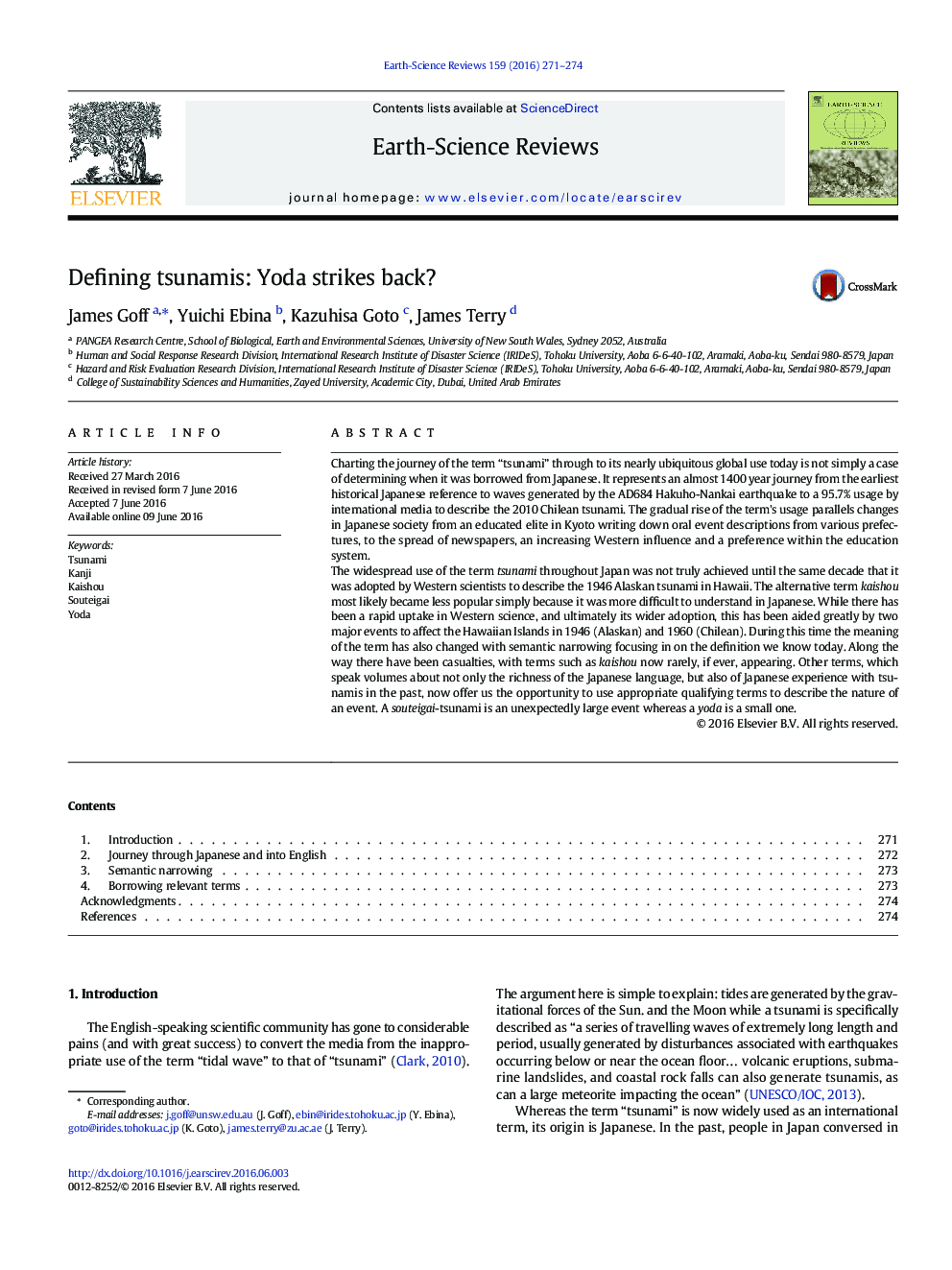| Article ID | Journal | Published Year | Pages | File Type |
|---|---|---|---|---|
| 6442853 | Earth-Science Reviews | 2016 | 4 Pages |
Abstract
The widespread use of the term tsunami throughout Japan was not truly achieved until the same decade that it was adopted by Western scientists to describe the 1946 Alaskan tsunami in Hawaii. The alternative term kaishou most likely became less popular simply because it was more difficult to understand in Japanese. While there has been a rapid uptake in Western science, and ultimately its wider adoption, this has been aided greatly by two major events to affect the Hawaiian Islands in 1946 (Alaskan) and 1960 (Chilean). During this time the meaning of the term has also changed with semantic narrowing focusing in on the definition we know today. Along the way there have been casualties, with terms such as kaishou now rarely, if ever, appearing. Other terms, which speak volumes about not only the richness of the Japanese language, but also of Japanese experience with tsunamis in the past, now offer us the opportunity to use appropriate qualifying terms to describe the nature of an event. A souteigai-tsunami is an unexpectedly large event whereas a yoda is a small one.
Related Topics
Physical Sciences and Engineering
Earth and Planetary Sciences
Geology
Authors
James Goff, Yuichi Ebina, Kazuhisa Goto, James Terry,
